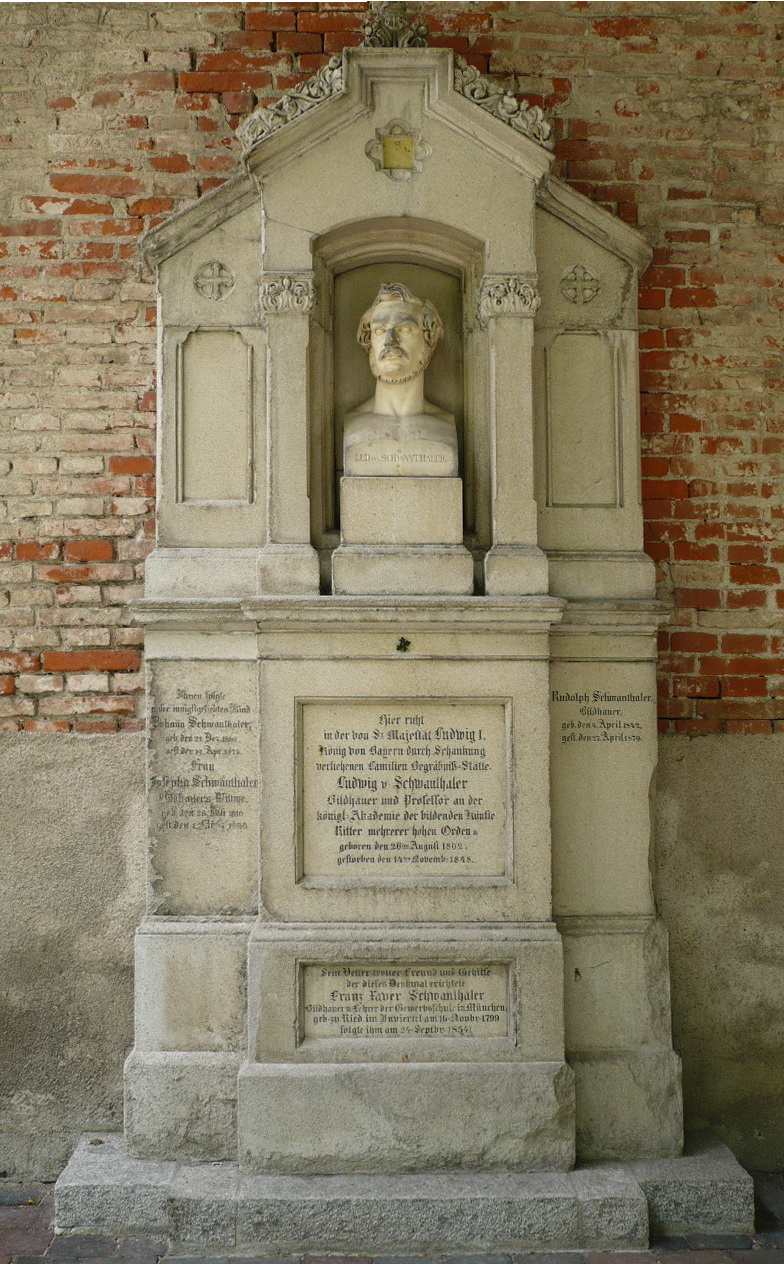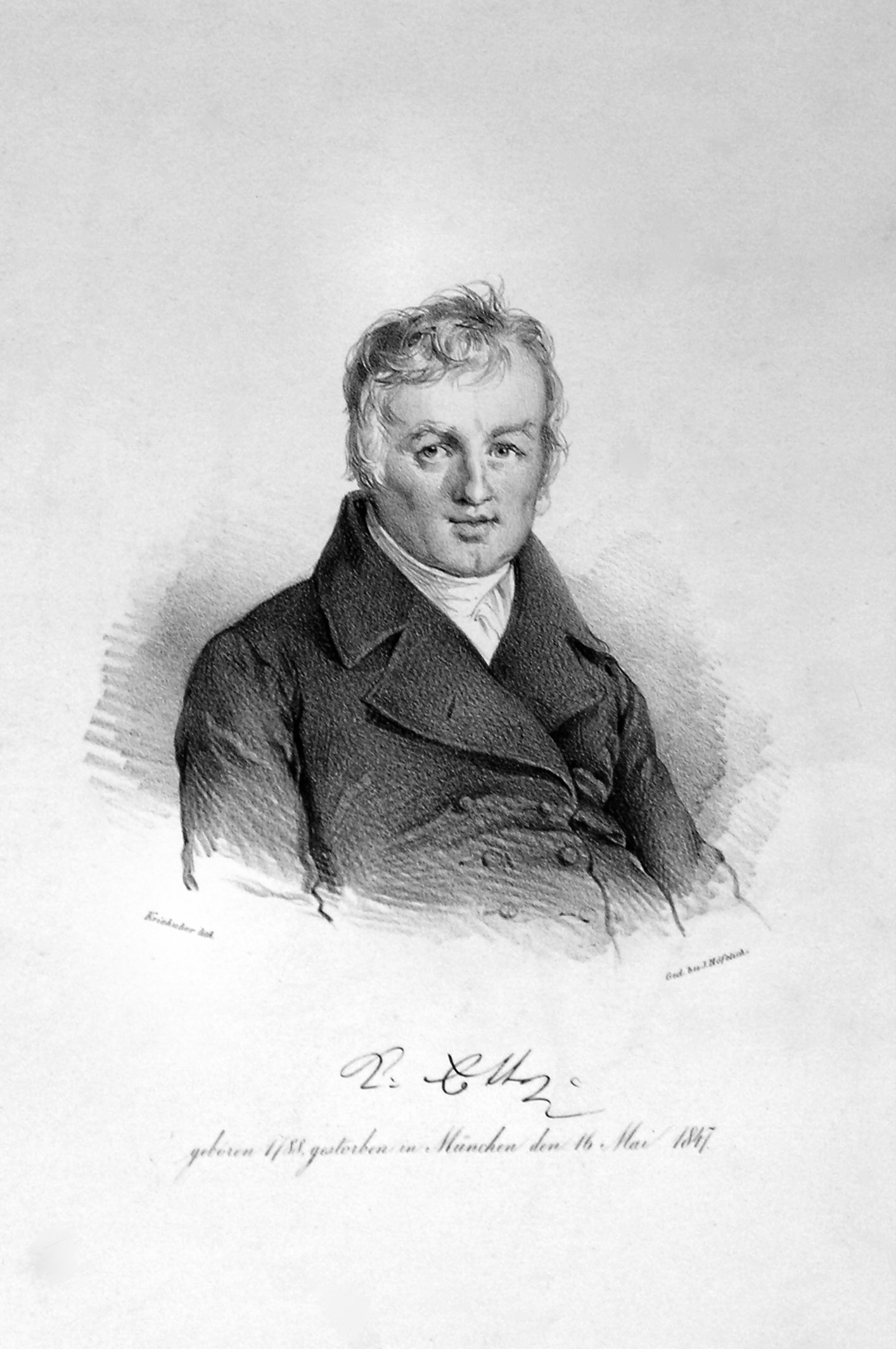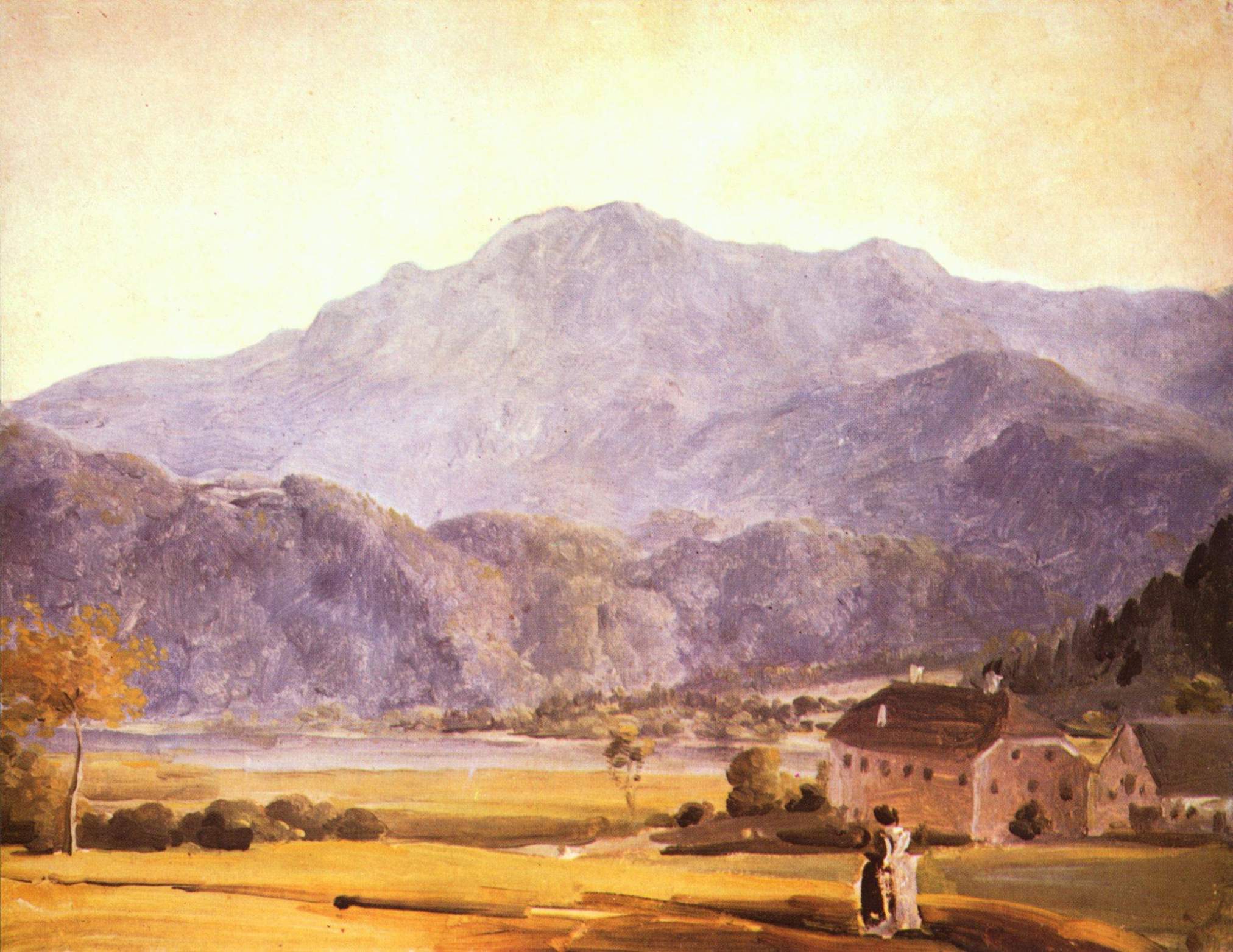|
Alter Südfriedhof
The Alter Südfriedhof (''Old South Cemetery'') also known as "Alter Südlicher Friedhof" is a cemetery in Munich, Germany. It was founded by Duke Albrecht V as a plague cemetery in 1563 about half a kilometer south of the Sendlinger Gate between Thalkirchner and Pestalozzistraße. History The cemetery was established in 1563, during the reign of Albert V, Duke of Bavaria, for victims of the plague and located outside the city gates. It was also the burial ground of the dead from the Sendling uprising of 1705, in which over 1100 were killed after they had surrendered to the troops of Joseph I, Holy Roman Emperor. From 1788 to 1867 it was the single collective burial ground for the dead of the city. Notable interments From 1788 to 1868 it was the only cemetery for the whole metropolitan area of Munich, which is why it contains the graves of several prominent Munich figures of that period. * Max Emanuel Ainmiller – painter, 1807–1870 * Franz Xaver von Baader – ... [...More Info...] [...Related Items...] OR: [Wikipedia] [Google] [Baidu] |
Germany
Germany,, officially the Federal Republic of Germany, is a country in Central Europe. It is the second most populous country in Europe after Russia, and the most populous member state of the European Union. Germany is situated between the Baltic and North seas to the north, and the Alps to the south; it covers an area of , with a population of almost 84 million within its 16 constituent states. Germany borders Denmark to the north, Poland and the Czech Republic to the east, Austria and Switzerland to the south, and France, Luxembourg, Belgium, and the Netherlands to the west. The nation's capital and most populous city is Berlin and its financial centre is Frankfurt; the largest urban area is the Ruhr. Various Germanic tribes have inhabited the northern parts of modern Germany since classical antiquity. A region named Germania was documented before AD 100. In 962, the Kingdom of Germany formed the bulk of the Holy Roman Empire. During the 16th ce ... [...More Info...] [...Related Items...] OR: [Wikipedia] [Google] [Baidu] |
Theodor Von Bischoff
Theodor Ludwig Wilhelm von Bischoff (28 October 1807 in Hannover – 5 December 1882 in Munich) was a German physician and biologist. Biography He lectured on pathological anatomy at Heidelberg (1835-1843) and held professorships in anatomy and physiology at Giessen (1843-1855) and Munich, where he was appointed to the chair of anatomy and physiology in 1854. In 1843, Theodor von Bischoff was elected as member of the German Academy of Sciences. His most important contributions were made in embryology with a series of four exhaustive memoirs on the development of the mammalian ovum; published in 1842 (rabbit), 1845 (dog), 1852 (guinea pig), and 1854 (roe deer). His studies concerning animal metabolism by measuring urea were less successful, as was his research on the anatomy of skull and brain. He was elected a foreign member of the Royal Netherlands Academy of Arts and Sciences in 1878. Selected works * ''Beiträge zur Lehre von den Eyhüllen des menschlichen Fötus'', 1834 ... [...More Info...] [...Related Items...] OR: [Wikipedia] [Google] [Baidu] |
Caspar Ett
Caspar Ett (5 January 1788, Eresing – 16 May 1847, München) was a German composer and organist An organist is a musician who plays any type of organ (music), organ. An organist may play organ repertoire, solo organ works, play with an musical ensemble, ensemble or orchestra, or accompany one or more singers or instrumentalist, instrumental .... Life In 1804 he completed his secondary studies at the "Paedagogium" in Munich, now called the Wilhelmsgymnasium. Ett studied at the Electoral Seminar in Munich and in 1816 became the court organist at St. Michael's Church. Ett is also credited in the revival of choral music from the 16th to the 18th century. He composed for the Catholic Church, but also works for Greek Orthodox and Jewish worship. He was the music teacher of King Maximilian II. A street was named after Caspar Ett in Eresing. In the Munich city centre there is also an 'Ettstraße'. His grave is located in the Old South Cemetery in Munich. Works *Attollite portas ... [...More Info...] [...Related Items...] OR: [Wikipedia] [Google] [Baidu] |
Alexander Eibner
Alexander is a male given name. The most prominent bearer of the name is Alexander the Great, the king of the Ancient Greek kingdom of Macedonia who created one of the largest empires in ancient history. Variants listed here are Aleksandar, Aleksander and Aleksandr. Related names and diminutives include Iskandar, Alec, Alek, Alex, Alexandre, Aleks, Aleksa and Sander; feminine forms include Alexandra, Alexandria, and Sasha. Etymology The name ''Alexander'' originates from the (; 'defending men' or 'protector of men'). It is a compound of the verb (; 'to ward off, avert, defend') and the noun (, genitive: , ; meaning 'man'). It is an example of the widespread motif of Greek names expressing "battle-prowess", in this case the ability to withstand or push back an enemy battle line. The earliest attested form of the name, is the Mycenaean Greek feminine anthroponym , , (/Alexandra/), written in the Linear B syllabic script. Alaksandu, alternatively called ''Alakasandu'' ... [...More Info...] [...Related Items...] OR: [Wikipedia] [Google] [Baidu] |
Johann Georg Edlinger
Johann Georg Edlinger (1 March 1741 – 15 September 1819) was an Austrian portrait painting, portrait painter. Edlinger was born at Graz in 1741. He was a pupil of Georg Desmarées, Desmarées, and became court painter at Munich, where he died in 1819. His portraits are well painted, and show a leaning towards the works of Rembrandt. Some of his portraits of eminent Bavarians, engraved by Friedrich John, appeared in 1821 under the title ''Sammlung von Bildnissen denkwürdiger Männer.'' File:Johann Georg Edlinger - Family Portrait - WGA7461.jpg, ''Family portrait'', ca. 1800, now in the Neue Pinakothek File:Heinrich Zimmermann - Matrose.jpg, ''Heinrich Zimmermann'', a companion of James Cook, Captain Cook on his travels around the world References * 1741 births 1819 deaths 18th-century Austrian painters 18th-century Austrian male artists Austrian male painters 19th-century Austrian painters 19th-century Austrian male artists Austrian portrait painters Artists from ... [...More Info...] [...Related Items...] OR: [Wikipedia] [Google] [Baidu] |
Ignaz Von Döllinger
Johann Joseph Ignaz von Döllinger (; 28 February 179914 January 1890), also Doellinger in English, was a German theologian, Catholic priest and church historian who rejected the dogma of papal infallibility. Among his writings which proved controversial, his criticism of the papacy antagonized ultramontanes, yet his reverence for tradition annoyed the liberals. He is considered an important contributor to the doctrine, growth and development of the Old Catholic Church, though he himself never joined that denomination. Early life Born at Bamberg, Bavaria, Döllinger came from an intellectual family, his grandfather and father having both been eminent physicians and professors of medical science; his mother's family were equally accomplished. Young Döllinger was first educated in the gymnasium at Würzburg, where he acquired a knowledge of Italian. A Benedictine monk taught him English privately. He began to study natural philosophy at the University of Würzburg, where his f ... [...More Info...] [...Related Items...] OR: [Wikipedia] [Google] [Baidu] |
Johann Georg Von Dillis
Johann Georg von Dillis (26 December 1759 – 28 September 1841) was a German painter. Biography He was born in Gmain near Dorfen. Son of a gamekeeper and forester, he was educated in Munich with support from the prince-elector of Bavaria. Initially he was trained for the priesthood, but by 1786 his real interest, art, was beginning to be developed, and he taught drawing both at court and to private families. In 1790 he was appointed inspector of the Hofgarten Galerie, the princely collection. He continued in a curatorial role for the Bavarian court for much of the rest of his career; this allowed him some freedom to travel and expand his knowledge of European art. In 1792 he traveled to Dresden, Prague, and Vienna, and in 1794 he made his first trip to Italy, where he made watercolor studies from nature. A further trip to Italy followed in 1805, and brought him to Rome, where he met Pierre-Henri de Valenciennes, who introduced him to the idea of painting in open air. He s ... [...More Info...] [...Related Items...] OR: [Wikipedia] [Google] [Baidu] |
Sophie Diez
Sophie Diez or Dietz (''née'' Hartmann) (1 September 1820 – 3 May 1887) was a German soprano who sang leading roles with the Munich Hofoper (now known as the Bavarian State Opera) in a career spanning 40 years. She is most remembered today for having created the role of Magdalena in Wagner's ''Die Meistersinger von Nürnberg'', but she also sang in the world premieres of several other operas by lesser-known German composers. Life and career Diez was born in Munich and received her early training from her father who was a musician in the city. In 1836 she joined the chorus of the Munich Hofoper where the conductor Franz Lachner noticed the beauty of her voice and gave her further training.Eisenberg, Ludwig (1903)''Großes biographisches Lexikon der Deutschen Bühne im 19. Jahrhundert'' pp. 200–201. P. List She made her debut as a soloist on 1 December 1836 as Angelina in Cherubini's '' The Water Carrier'' and in February of the following year appeared as Benjamin in Étienne ... [...More Info...] [...Related Items...] OR: [Wikipedia] [Google] [Baidu] |
Ernst Friedrich Diez
Ernst Friedrich Diez or Dietz (17 March 1805 – December 1892) was a German lyric tenor who sang leading roles in the opera houses of Germany and Austria. He is most closely associated with the Munich Hofoper (now known as the Bavarian State Opera) where he was a member of the company from 1837 to 1849. Life and career Diez was born in Waldkirch in the Black Forest region of Germany and trained as a singer in Vienna with Conradin Kreutzer. He began his career in Pressburg in 1826, moving to the Teatro Grande in Trieste in 1828. From 1830 he sang in Berlin and Mannheim before becoming a permanent member of the Munich Hofoper in 1837, although he continued to appear occasionally as guest singer in Vienna in both opera and lieder. In Munich he sang in the world premieres of two operas by Franz Paul Lachner—''Alidia'' (1839) and ''Catharina Cornaro, Königin von Cypern'' (1841).Österreichisches Musiklexiko"Diez, Ernst Friedrich" Retrieved 23 June 2014 .Eisenberg, Ludwig (1903)''G ... [...More Info...] [...Related Items...] OR: [Wikipedia] [Google] [Baidu] |
Anna Dandler
Anna may refer to: People Surname and given name * Anna (name) Mononym * Anna the Prophetess, in the Gospel of Luke * Anna (wife of Artabasdos) (fl. 715–773) * Anna (daughter of Boris I) (9th–10th century) * Anna (Anisia) (fl. 1218 to 1221) * Anna of Poland, Countess of Celje (1366–1425) * Anna of Cilli (1386–1416) * Anna, Grand Duchess of Lithuania (died 1418) * Anne of Austria, Landgravine of Thuringia (1432–1462) * Anna of Nassau-Dillenburg (died 1514) * Anna, Duchess of Prussia (1576–1625) * Anna of Russia (1693–1740) * Anna, Lady Miller (1741–1781) * Anna Russell, Duchess of Bedford (1783–1857) * Anna, Lady Barlow (1873–1965) * Anna (feral child) (1932–1942) * Anna (singer) (born 1987) Places Australia * Hundred of Anna, a cadastral district in South Australia Iran * Anna, Fars, a village in Fars Province * Anna, Kohgiluyeh and Boyer-Ahmad, a village in Kohgiluyeh and Boyer-Ahmad Province Russia * Anna, Voronezh Oblast, an urban locality in Voron ... [...More Info...] [...Related Items...] OR: [Wikipedia] [Google] [Baidu] |
Adolf Christen
Adolf Christen (7 August 1811 – 13 July 1883) was a Bavarian stage actor,gravestone of the family grave at the Old Southern Cemetery in Munich. theater director and theater manager of the old Munich "Aktientheater". Christen was born in Berlin. When the father of the actress Klara Ziegler Klara Ziegler, also Clara Ziegler, (27 April 1844 – 19 December 1909) was a German stage actress and writer. Life Born in Munich, Ziegler, the daughter of a whitewashing (censorship), whitewashing owner, was to marry a highly respected, wea ... died he got the wardship of her. First he declined her wish to become actress but later he taught her. In 1876 he married her.from: Pataky, Sophi''Lexikon deutscher Frauen der Feder'' Vol. 2, Berlin, 1898, p. 463. He died in Munich. The family grave is at the Old Southern Cemetery in Munich. References External links * {{DEFAULTSORT:Christen, Adolf German male stage actors German theatre managers and producers German theatre direc ... [...More Info...] [...Related Items...] OR: [Wikipedia] [Google] [Baidu] |
Friedrich Bürklein
Georg Friedrich Christian Bürklein (30 March 1813 – 4 December 1872) was a German architect and a pupil of Friedrich von Gärtner.Allgemeine Deutsche Biographie"Bürklein, Friedrich" (in German) Biography He was born in Burk, Middle Franconia. His first important work was the construction of the town hall in Fürth (1840–50) which is influenced by the Palazzo Vecchio in Florence. Bürklein created also the Hauptbahnhof in Munich (1847–1849) with its steel construction and the stations of Augsburg, Bamberg, Ansbach, Neu-Ulm, Hof, Nördlingen, Rosenheim, Würzburg, Nuremberg and Bad Kissingen. From 1851 Bürklein was the chief architect of the royal Maximilianstraße in Munich with all its state buildings including the Maximilianeum. Its Neo-Gothic architecture was influenced by the Perpendicular style and was strongly disputed. Before the Maximilianeum was finished Bürklein was replaced by Gottfried Semper. The sensitive Bürklein died mentally deranged in the sanatori ... [...More Info...] [...Related Items...] OR: [Wikipedia] [Google] [Baidu] |





